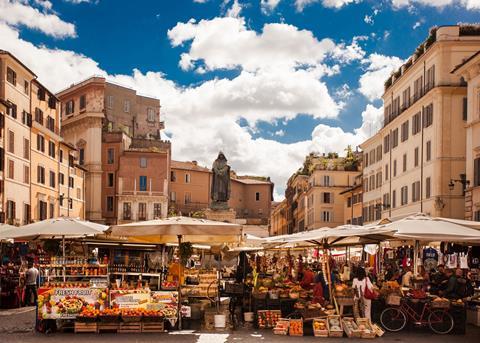Eleanor Jolliffe talks to Suzanne Hall about studying in Rome, and the lessons she learned there about the coalescence of social and spatial practices

Rome was liberating in so many ways. In parts of the city there was an unexpected coalescence of African and European sensibilities. The messiness of the urban fabric was also revelatory, with the organic quality of Roman city blocks and courtyards layered behind the ordered facades of the streets.
It was experientially so different from the suburban South Africa in which Suzanne Hall grew up. Having lived in the divided landscapes of Johannesburg and Cape Town, Hall went on to run her own small architecture practice after graduating, and came to Rome for nine months in 1998 on a South African Rome Scholarship in Architecture.
She became intrigued by the social complexity of Rome, particularly the Campo de’ Fiori area and its distinctive courtyard blocks that functioned as complex live-work spaces. In comparison to the deeply segregated logics of order imposed by apartheid in Cape Town, Rome’s organic patterns of inhabitation fascinated her. The ‘ordinary vitality of public life’ as Hall expresses it.
In 1998, just four years after the end of apartheid, approximately 10,000 people a month were migrating from the countryside into Cape Town, having been prohibited from previously living there by the apartheid legislation of racial segregation. For Hall, Rome provided a lens on density and mixity, and she found the urban vitality of the Roman streets compelling, loving the experience of walking alone through the city.

The urban fabric around the Campo de’ Fiori revealed itself as a way of understanding the overlap of live-work arrangements. Here were intricate forms of public and semi-public space that exceeded the limits of segregated suburban life that she had experienced in growing up in South Africa.
The subdivision of those blocks in proximity to Campo de’ Fiori was revelatory - the way rules were set up in the city - both implicitly and explicitly to protect public and private rights and expand on collective sensibilities and shared spaces. Hall describes it as the buildings “establishing the rules that we intuitively engage with”.
Inspired also by the migrant infusions in a church she regularly visited in this part of Rome, she began to observe the practices of urban multicultures. While her interest in architecture was prefaced by an interest in politics, Hall understands design as a political and imaginative possibility. Her later research focused on migrant populations in the city, specifically how people make life and work in precarious positions; how they claim and reconstruct space and meaning.
On returning to South Africa she expanded her practice, collaborating with Jacqui Perrin and Nisa Mammon and focusing largely on public projects. She moved to London four years later, where she undertook her PhD in the Cities Programme at the LSE. Inspired by her experiences in Rome, as well as embodying her experiences in Johannesburg and Cape Town, Hall remains captivated by the coalescence of social and spatial practices and how this impacts on design.
She has since become a Professor of Sociology, teaching primarily on the Cities Programme at the LSE. She is author of The Migrant’s Paradox: Street Livelihoods and Marginal Citizenship in Britain (2021), and City, Street and Citizen: The measure of the ordinary (2012), and she co-edited The Sage handbook of the 21st Century City with Ricky Burdett (2018).
The British School at Rome was an academic opening for Hall or, as she phrased it, both a profound luxury and a phenomenal platform for furthering the next decades of her career. The BSR exposed her to many varied dimensions of academic life and creative practice, and found the idea of people being funded to undertake research in the humanities surprising and compelling. She describes the joy of being taken outside of her comfort zone, and the formative nature of the friendships and networks she formed there.
Her favourite memories were of summer evenings, when the tables for dinner were pushed out into the courtyard and the residents and guests would sit near the lemon trees eating plates of pasta. On Saturday nights there was no food provided by the school and Hall remembers the collective efforts of the residents to cook; the artists laying elaborate place settings, and residents sharing food, music and talk. Outside in the courtyard and beyond the usual formats, the formality of the institution loosened, shaping an uncomplicated sense of being together.

Hall also loved the ease and accessibility of space and art in Rome. Walking into a church and seeing a Caravaggio without curatorial impositions or ticketed requirements; entering into Santa Maria in Trastevere and understanding the value of darkness; going along on the fabulous trips and sometimes convoluted journeys organised by residents and experts at the BSR, was all quite extraordinary.
With a weak exchange rate, Rome is beyond most South African’s reach and the South African Rome Scholarship is now sadly defunct (though South Africans, indeed all Commonwealth citizens, are eligible for the current Rome Scholarship in Architecture). Being in Rome for those months was more than an honour. It was, quite literally, life changing.
The BSR in two words according to Hall? Mind blowing.
















No comments yet